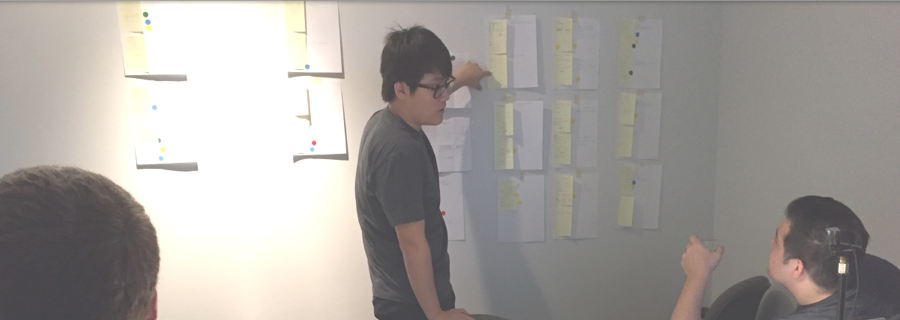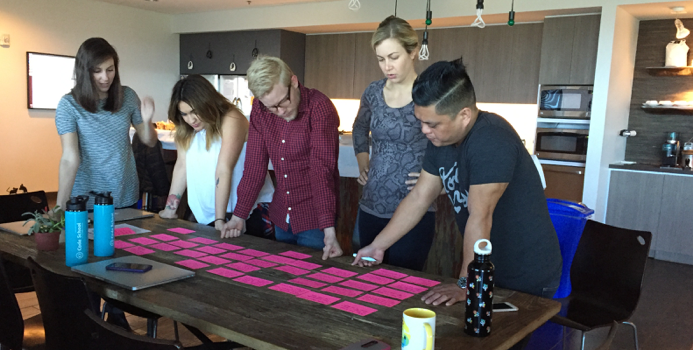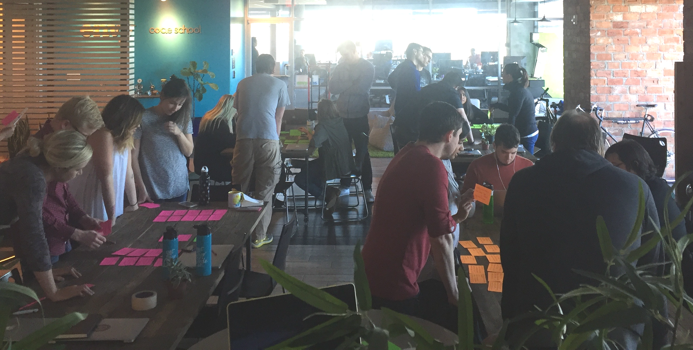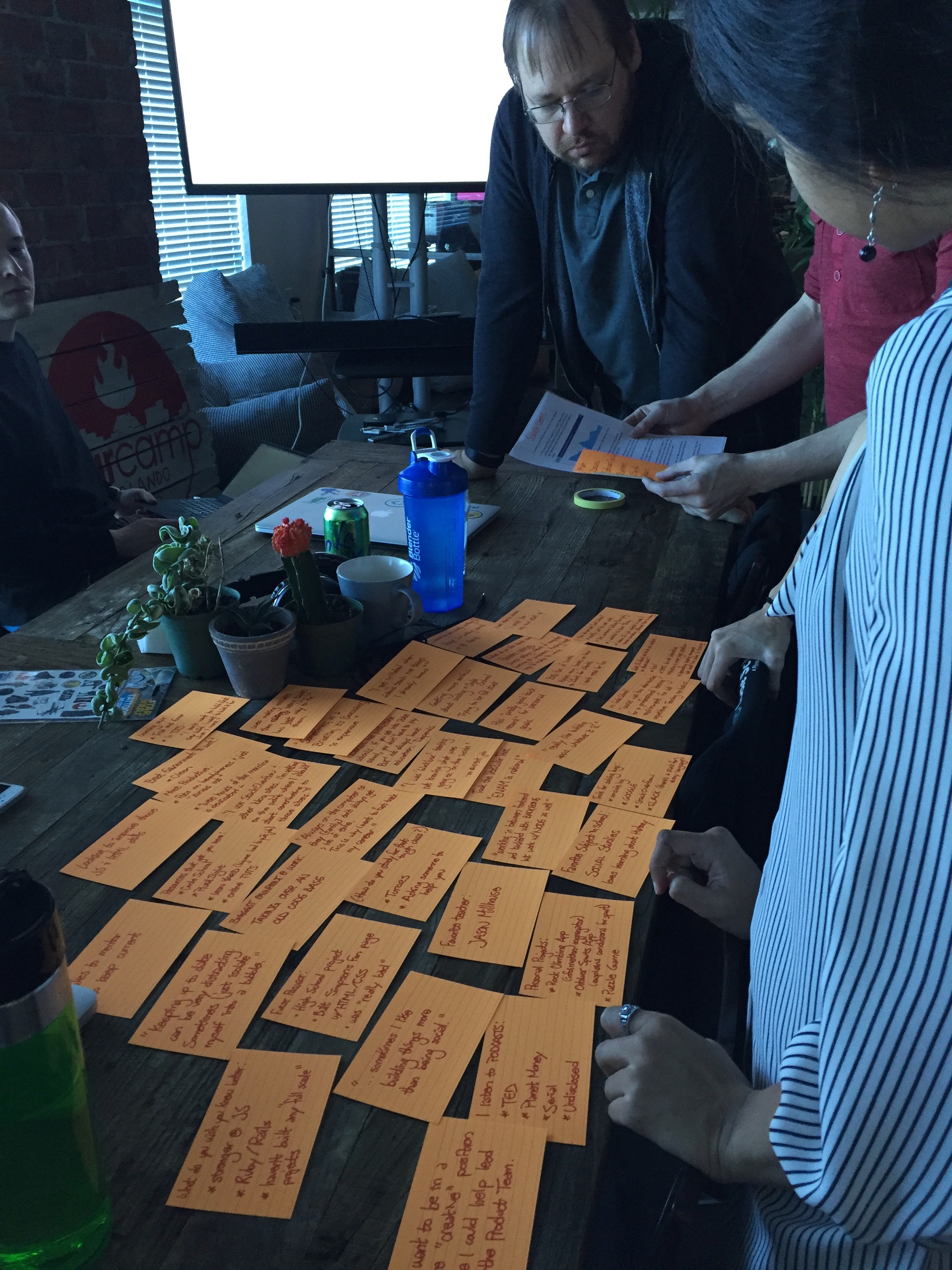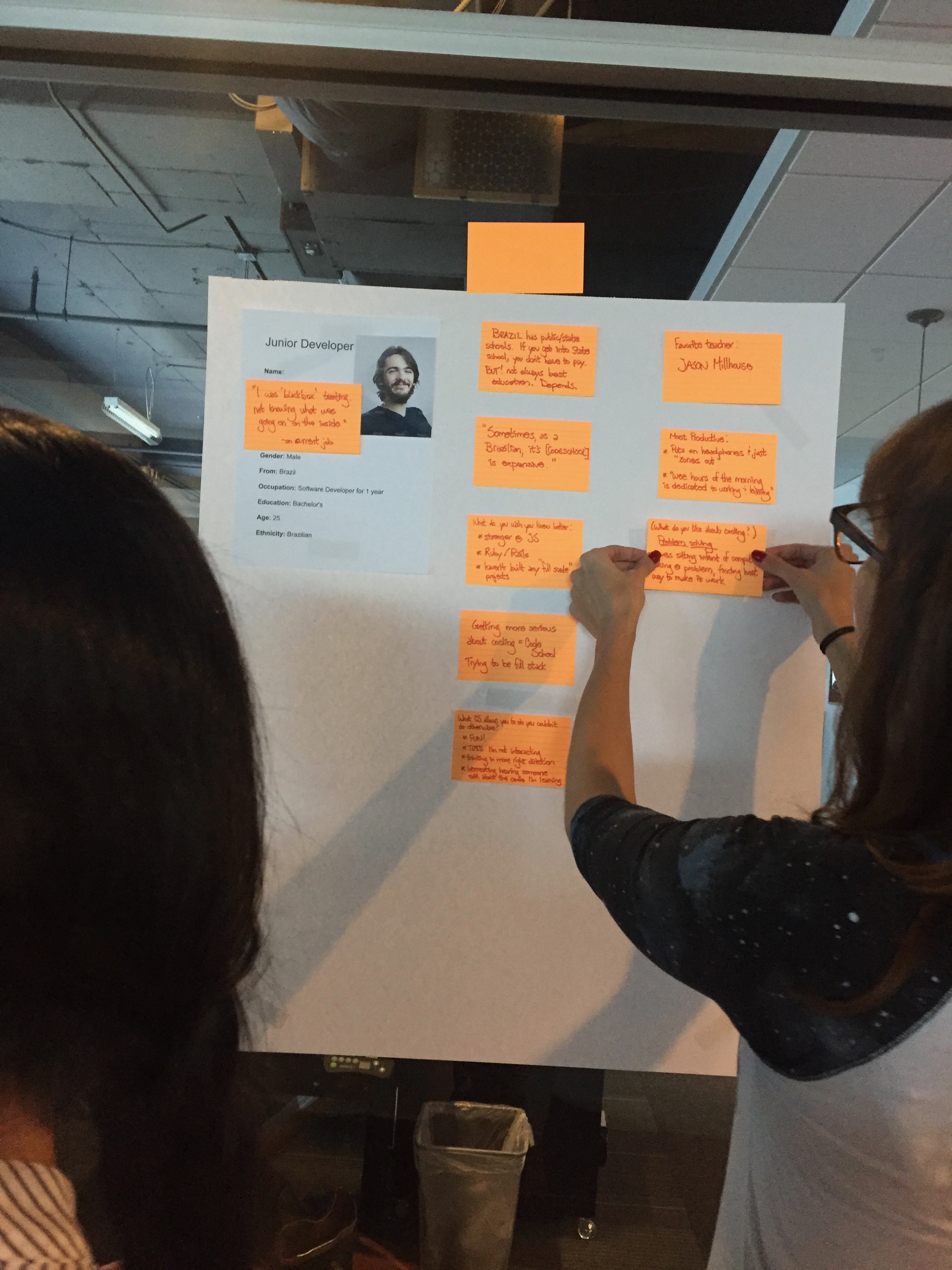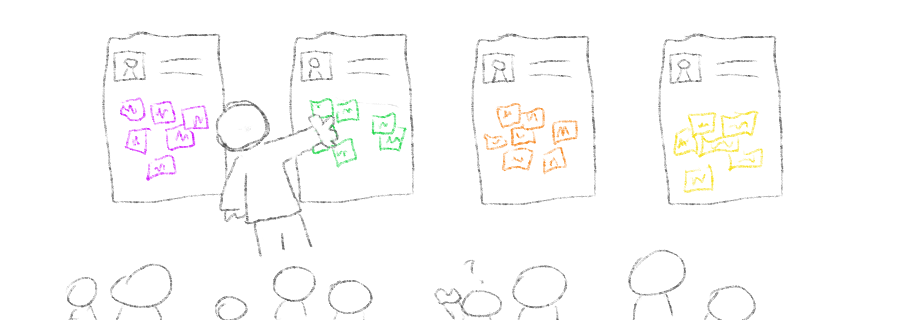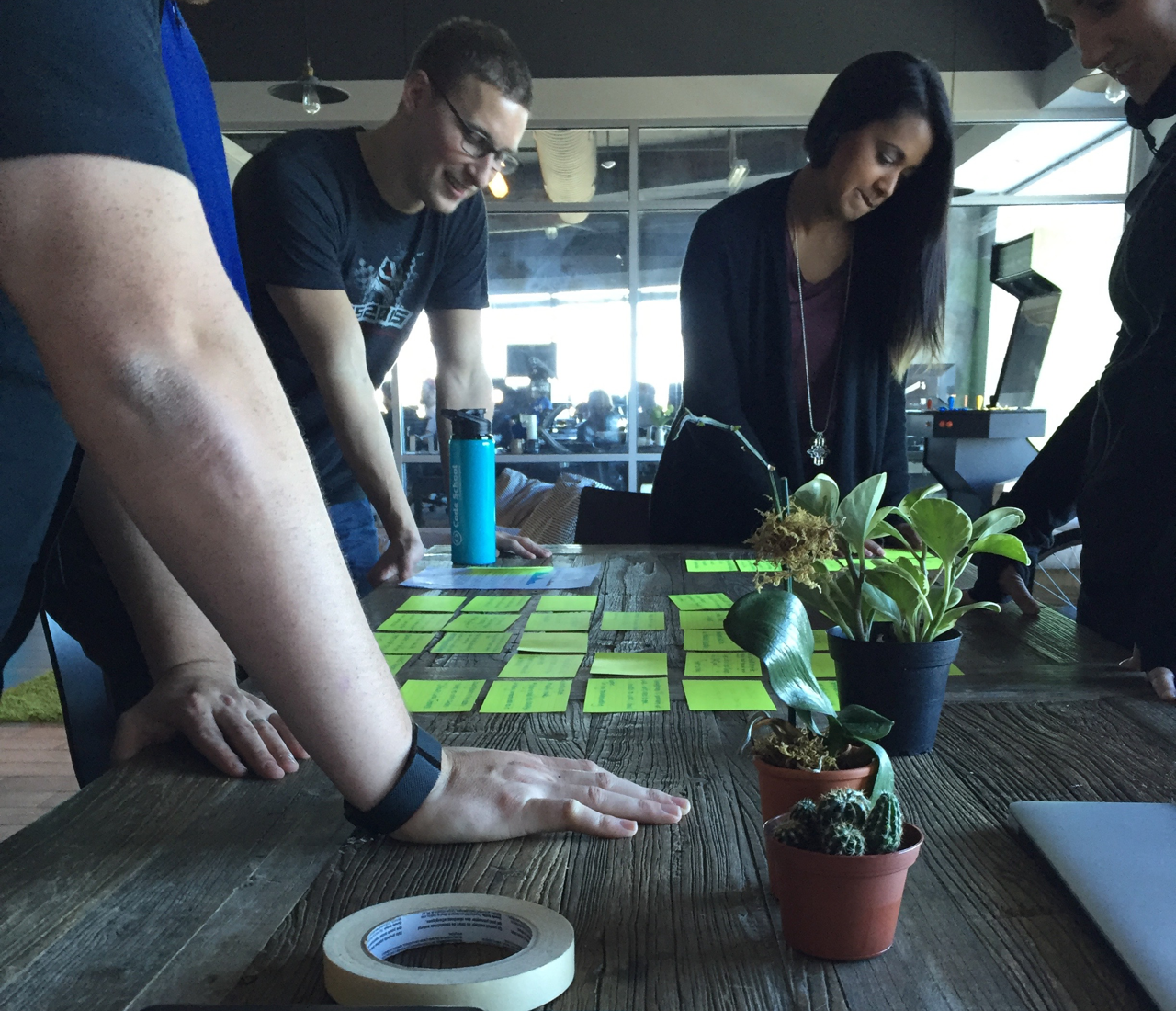
The Problem
For me, it started with a session with the marketing director that pointed to a regular monthly drop-off rate of users. As an education platform, drop-off shouldn't happen until a user is adequately educated or most likely, longer than a month. With marketing unable to explain the drop and the new courses & features built only by sense of smell, I wanted to get us real data & direction. We needed personas based on real evidence.



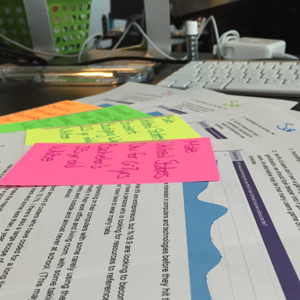 I started by capturing all assumptions across the company. This also built trust from coworkers to have their steadfast views heard and addressed. I then worked with both my intern and data analyst to turn assumption and question alike into survey questions. We wanted demographics, motivations and all our questions turned into something that could yield us some good quantitative data.
I started by capturing all assumptions across the company. This also built trust from coworkers to have their steadfast views heard and addressed. I then worked with both my intern and data analyst to turn assumption and question alike into survey questions. We wanted demographics, motivations and all our questions turned into something that could yield us some good quantitative data. We wanted the ability to cross-segment against education level, occupation, sex, age, number of children, location and even financial standing
We wanted the ability to cross-segment against education level, occupation, sex, age, number of children, location and even financial standing
 Based on our survey, I worked with our team to build out a script we could use in tandem with our survey to fill in gaps and color our quantitative data. When possible, we tried interviewing in their typical work environments to capture what we could of environmental challenges as well. We also drilled into user's motivations specifically since this could really best be gathered through qualitative means. We knew we could then cross-reference them against our survey findings to color their corresponding personas.
Based on our survey, I worked with our team to build out a script we could use in tandem with our survey to fill in gaps and color our quantitative data. When possible, we tried interviewing in their typical work environments to capture what we could of environmental challenges as well. We also drilled into user's motivations specifically since this could really best be gathered through qualitative means. We knew we could then cross-reference them against our survey findings to color their corresponding personas.